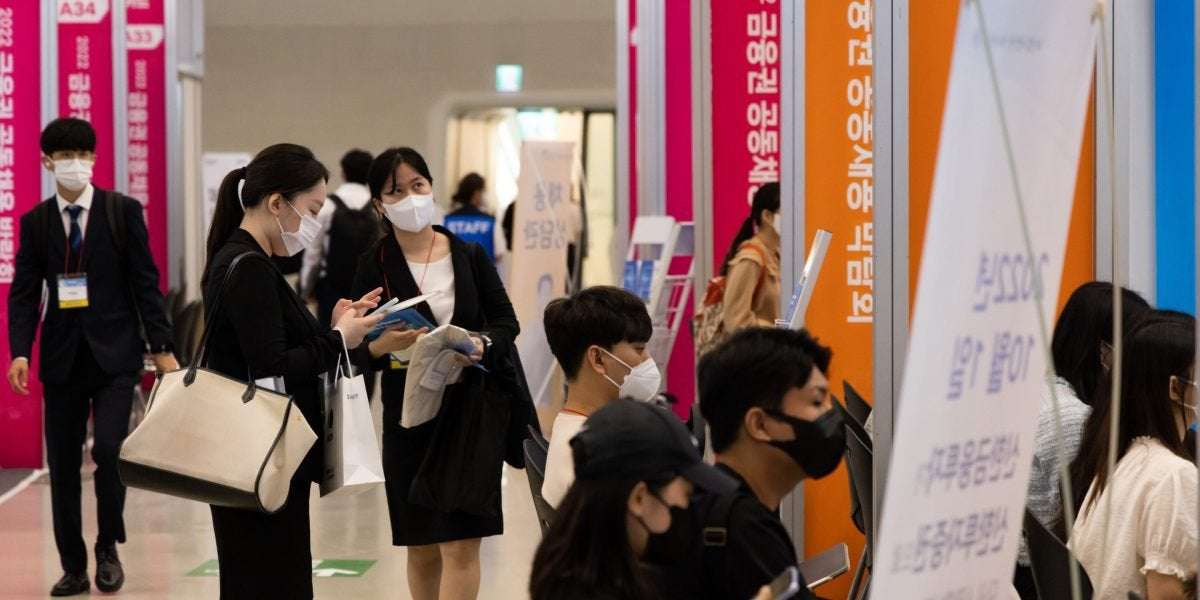South Koreans are having so few children that their country had the world’s lowest fertility rate in 2021, even lower than the preceding year in which the nation also came in dead last.
South Korean women averaged 0.81 births during their lifetimes in 2021—the sixth straight year of decline, says Statistics Korea.
Over the same period, the number of newborns in the country plunged to a new, all-time low of 260,000, down 4.3% from the year prior, according to South Korea census bureau data released this week. It’s the second consecutive year that the country’s childbirths dipped below 300,000.
South Korean is among many developed nations that are experiencing a decline in childbirths and fertility rates. For example, Hong Kong had a fertility rate of 0.9 in 2020 while Singapore’s was at 1.1.
In the U.S., the number of newborns actually rose 1% in 2021 to 3.6 million.
Last year, South Korean Netflix series Squid Game took the world by storm. In the show, 456 indebted contestants compete in deadly games for a chance to win $40 million and erase their debts.
Its themes resonated worldwide, but particularly for young South Koreans, whose chances at moving up the country’s socioeconomic ladder have plummeted in recent years. Job competition has intensified, home prices have skyrocketed, and young people have turned to ‘get rich quick’ schemes like bingeing on debt to invest in cryptocurrencies and stocks, along with online gambling.
Young Korean professionals also face significant societal pressures to conform, and work pressures like long hours and heavy drinking sessions with bosses and coworkers. These professional pressures are exacerbated for working women—over half of South Korea’s female population are in the workforce—who are expected to do all of the above, but also adhere to rigid beauty standards and take care of the home and family.
These factors have translated into a lack of desire to become parents among young people. Over half of young Koreans say having children is unnecessary after marriage. It has also exacerbated the country’s mental health crisis; over 95% of the population say they’re stressed and the country has the highest suicide rate among all OECD nations.
During the 1970s, South Korea’s annual number of childbirths hovered at around 1 million. Since then, it has consistently declined. In 2017, that figure fell below 400,000 for the first time.
Last year, the nation’s number of births per 1,000 people, also plunged to a new, all-time low of 5.1, compared to 5.3 in 2020. The average age of a woman giving birth has also increased to 33.4 in 2021, compared to 33.1 in a year earlier.
“How difficult must people find it to get married, give birth, and raise children for this number to be so low? If we take this as a compressed measure of basic life, it’s a troublesome figure,” Lee Samsik, a professor of policy at Seoul’s Hanyang University, told the New York Times.
In 2020, South Korea experienced its first natural population decline as its number of deaths surpassed the number of newborns. By the end of this century, South Korea’s population of 51 million could halve, according to United Nations estimates.
In the last few years, the nation has scrambled to find solutions to deal with its shrinking population and labor force. The government has advocated for bringing more women—and robots—into its workforce. It has also introduced subsidies to encourage families to have more children, including a cash bonus of $1,185 for every child born, and a monthly grant of $224 for the first year of a child’s life (this will increase to $373 by 2025). New parents who have been in their job for six months are entitled to one year of paid parental leave. But in practice, workers taking paternity leave is still rare due to professional stigma while mothers taking maternity leave are often penalized by their employers for doing so.
South Korea’s low fertility rate and female labor participation rates ultimately “reflect entrenched social norms that will be difficult to turn around. A sharp decline in the workforce over the next couple of decades is inevitable,” Gareth Leather, senior Asia economist at research firm Capital Economics, wrote in a note last August.
The subsidies “may help at the margin, but we doubt it would make a huge difference. Financial support for parents tends to have a limited impact on fertility,” Leather said.
South Korea has implemented reforms to open its doors to migrant laborers. Yet only 3% of its population is foreign-born, given the challenges of becoming a South Korean citizen. Public popular opinion is also stacked against mass immigration into the country.
In the absence of a major government intervention, the country will likely experience a crippling labor shortage by the middle of the next decade; and within three to four generations, the national population could drop dramatically, Lee Sang-lim, a demographer with the Korea Institute for Health and Social Affairs, told the New York Times.

goodboybane on August 28th, 2022 at 03:38 UTC »
Try making life affordable, fighting Cheobol corruption, getting rid of the "overtime culture" that eats up people's time and many other cultural issues that are plaguing the society. What? No? You'll keep doing the same things and then do a Pikachu face when nothing changes?
KW_ExpatEgg on August 28th, 2022 at 01:45 UTC »
If you like visual data: Population Pyramid for S Korea
ETA; try the date slider on the right to see predicted numbers
Id_rather_be_high42 on August 28th, 2022 at 01:18 UTC »
Have politicians tried reducing the cost of living?